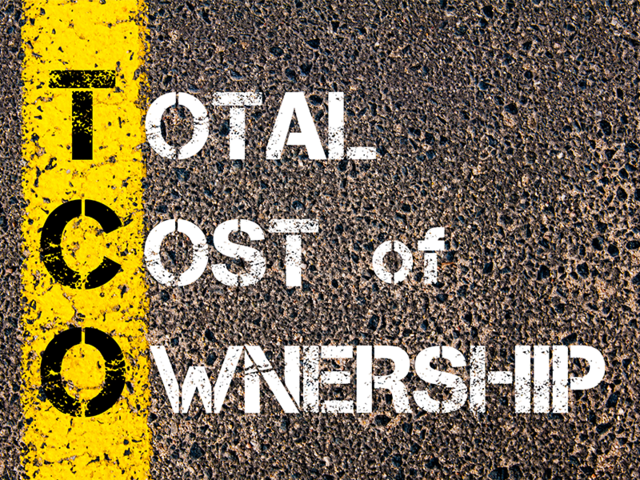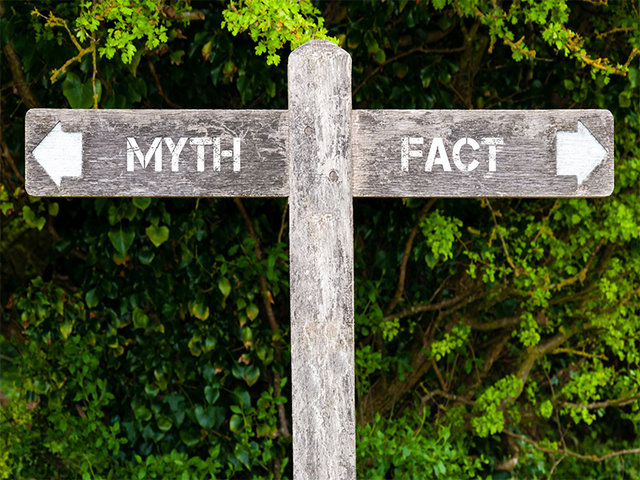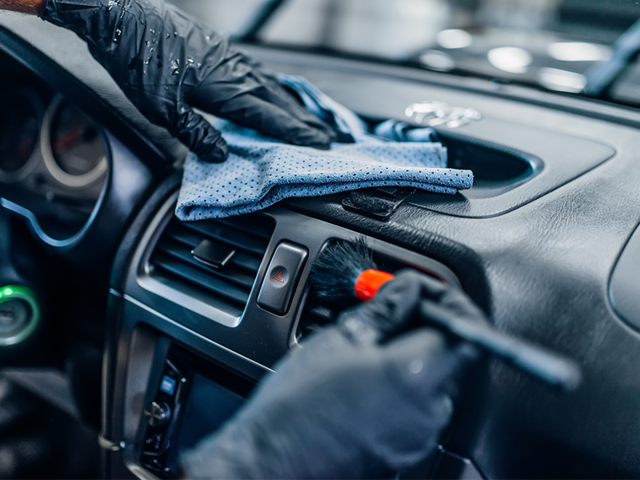Credit can be hard to understand, after all we don’t learn about in school. This confusion is often made worse by common misconceptions you hear from well meaning friends and family. VIDrives is a dedicated team of credit, financing and vehicle specialists that are here to help you understand, navigate and improve your credit– Read on for our guide to the top 6 Credit Myths. Myth #1: Checking...

Many dealerships advertise low payments, but there’s usually a catch. Whether it be high down payments, not including the taxes, being quoted a lower interest rate than you qualify for- and then you have to consider other budget factors! True cost of ownership is made up of your monthly payments, yearly maintenance and how much you may need to save towards that, the cost of fuel, and your insurance premiums. In this article we’ll break down these factors and how to plan ahead next time you’re shopping for a vehicle.
Payment Total
To get a sense of your total payment you’ll need to have a decent estimate of how much the total price of a vehicle is, how high of a down payment you’re willing to pay (if any), the cost for financing you’ll qualify for and how much you’ll be taxed on the purchase price.
So how do you figure this out?
Total Vehicle Price
The total vehicle price can be the most simple item on this list, as it can be found while you’re shopping or by simply asking the seller and including the price of any add ons you opt in for.
Here’s where it gets complicated: Are you trading in? When you trade in a vehicle that changes the total price of the vehicle you’re purchasing. This can be as simple as subtracting the value of your current vehicle from your new vehicle, but when you’re still making payments on your current vehicle you have to consider what you still owe. If you owe more on your current vehicle than it’s worth- that’s called negative equity and will actually increase the total vehicle price.
To find out what your vehicle is worth, consider looking up your make, model, year and trim on an online database like Autotrader, and looking at the value of vehicles in similar condition with similar kilometers- or skip the extra research and Value Your Trade using our tool. If you’re still making payments, contact the lender you’re financing with and find out the remaining balance and com
Once you have this information- hold onto it as you continue your fact finding mission.
Down Payment
A down payment is a payment that is made up front- toward the purchase of something you’re financing. The reason we don’t include your down payment as a part of the total vehicle price is that it will affect the amount you’ll finance (and your payments + cost of borrowing), but not your total vehicle price (or the amount of tax you’ll pay).
You may opt to make a higher or lower down payment (if at all) to avoid or minimize the risk of negative equity if you’re planning to trade in, to lower your monthly payments, or to save money on the cost of financing.
Cost of Financing
Cost of Financing is one of the most important factors in determining total payment, and it is calculated using the interest rate and term that you qualify for. So how are these factors determined? Here are some of the basics
Lenders select interest rates (and terms) based on the risk of issuing a loan, and what they stand to lose if the loan is not repaid (essentially, will they be able to recover lost funds by selling your vehicle?). If your credit profile is good, that’s considered low risk, if you have a spotty credit history, the risk increases. This generally means that a lender will offer a low risk borrower a longer payment term, and lower interest rates resulting in a lower monthly payment, than a high risk borrower purchasing the exact same vehicle.
How do you know if you’re a high risk borrower? Knowing your credit score is a great place to start- but it doesn’t paint a full picture, as things like your current financial obligations, as well as your length and stability of employment can affect your risk factor as well. The best way to know where you’ll stand is to get pre-approved, before you start shopping- so you can look at payments with an estimated interest rate.
VIDrives offers a pre-approval service that doesn’t affect your credit score, with no obligation to purchase with us.
How much tax you’ll pay
In BC, unless you’re eligible for tax exemption, the purchase of a vehicle from a licensed dealer comes with the added cost of Provincial Sales Tax (PST) and the Federal General Sales Tax (GST). While you don’t have to pay GST on a private sale, The PST increases in this case, So how much will you end up paying? If you’re purchasing for $55,000 or less you’ll pay 12% whether you buy privately or from a dealership, but after that the PST increases incrementally- for BCs Luxury Tax.
| Dealership Sale Price (PST+GST) | Private Sale Price (PST) |
| Under $55,000 (7+5%) 12% | Under $124,999 (12%) |
| $55,000 – $55,999 (8+5%) 13% | $125,000 – $149,999 (15%) |
| $56,000 – 56,999 (9+5%) 14% | $125,000 – $149,999 (15%) |
| $57,000 – $124,999 (10+5%) 15% | $125,000 – $149,999 (15%) |
| $125,000 – $149,999: (15+5%) 20% | $125,000 – $149,999 (15%) |
| Over $150,000: (20+5%) 25% | Over $150,000 (20%) |
Here’s where your trade in comes back into play- When you trade in your car, the amount of the new purchase is reduced by the value of your trade in, and then you only need to pay tax on that reduced amount of the sale. It can also reduce your payments in the long term if you are financing.
For example, If you’re a BC Resident and you purchase a Sporty SUV for $35000, you’d pay $4200 in Tax- But if you’re trading in your old SUV that was valued by the Dealership at $10,000, you’ll only pay tax on $25000 or $3000, which saves you $1200
Once you have all of the Values listed above- it’s time to plug them into a Car Loan Calculator to have an idea of what you’ll pay in total interest, overall, and per payment.
Other Costs
Insurance
In BC, ICBC Basic Autoplan insurance is mandatory for any driver- and the cost of that is determined by the driver’s risk, and the risk based on the location and how much you drive.
When registering your vehicle, you’ll be asked who drives your vehicle and they will determine the risk factors of all drivers based on driving experience and crash history over a 10 year scan period. The primary driver makes up 75% of the premium calculations, and the remaining 25% is based on the listed driver with the highest risk. If the other listed driver is a household member or employee, and has a lower risk factor- the premium may be reduced.
Beyond the basics, Insurance Products like Collision, Comprehensive etc. will cost more and are affected by the year, make and model of your vehicle, what you set your deductible to, and safety features your vehicle has.
To get a better idea of how much you’ll pay for insurance Get an Estimate from ICBC so you can factor this into your budgeting.
Cost of Maintenance
While new, and many pre-owned vehicles come with extended warranty for unexpected repairs, there are still some maintenance items you’ll need to pay for. This can include oil changes, brakes, fluids and even air conditioning among other things.
Cost of maintenance will depend on your vehicle, and where you get it serviced, you can look up your vehicle’s average yearly cost of maintenance and divide that by 12 to have a rough idea of how much money you should set aside per month if you’ll need to save up for more expensive maintenance- or look at your vehicle’s recommended schedule of maintenance and talk to your mechanic or service departments for estimated costs for a more detailed idea.
To save some money on the cost of ownership, talk to your financing specialist about our Free Oil Change program.
Cost of Fuel
Cost of fuel is perhaps the most unpredictable item on this list, because it depends on your vehicle’s fuel efficiency, where and how much you drive, and the fuel prices in your area- But if you have a rough idea of how many KMs you drive each month, you can have a reasonable idea by using a Fuel Cost Calculator with current prices and your vehicles L/100km.
Other Articles That May Interest You
Here on the Island, we’re lucky enough to (usually) have our winter delayed until around late November, still it’s better to be prepared for the cold weather before you’re caught in a snowstorm. Here are some easy steps that you can take to take care of your vehicle, so it can take care of you this winter. Step 1: Seasonal Maintenance Check Up Vehicle Maintenance isn’t seasonal, but as the...
Getting your car professionally detailed gets pricey fast, but frequent cleaning is an important habit to keep your vehicle in good condition- That’s why many drivers opt for an affordable DIY Detail. Here are some tips, product recommendations and advice to save you some time and money when you’re detailing your car. Find a comfortable workstation Even with the best tools and strategy,...





